1. Introduction
Greek mythology, with its vast array of gods, heroes, and epic tales, has indelibly shaped the fabric of human history and culture. From the arts to philosophy, its stories and characters have provided a rich wellspring of inspiration, introspection, and understanding about the human psyche and our relationship with the world. Central to this intricate tapestry of myths stands Demeter, the revered goddess of harvest, fertility, and the poignant cycle of life and death. Her legends not only underscore the paramount importance of nature’s rhythms and agriculture in ancient Greek society but also illuminate deeper truths about love, loss, and rebirth that resonate profoundly even in our modern world.
| Origin | Greek Mythology |
|---|---|
| Classification | Goddess |
| Family Members | Cronus (Father), Rhea (Mother), Zeus (Brother), Hera (Sister), Poseidon and Hades (Brothers), Persephone (Daughter) |
| Region | Greece |
| Associated with | Agriculture, Harvest, Grains, Fertility, Seasons |
2: Historical Overview and Importance of Demeter
The tapestry of Greek mythology, as intricate and vast as it is, has its threads woven with tales of gods and goddesses that symbolized the core values and beliefs of the ancient Greek society. Among them, Demeter holds a unique place, distinguished not just by her power but by her profound connection to the very sustenance of life. The earliest mentions of Demeter can be traced back to ancient Greek texts where she is venerated as a primary deity, holding a revered position in the pantheon of gods. Her stories are not just mere tales of divine prowess but are emblematic of her crucial role in the rhythm of nature and human existence.
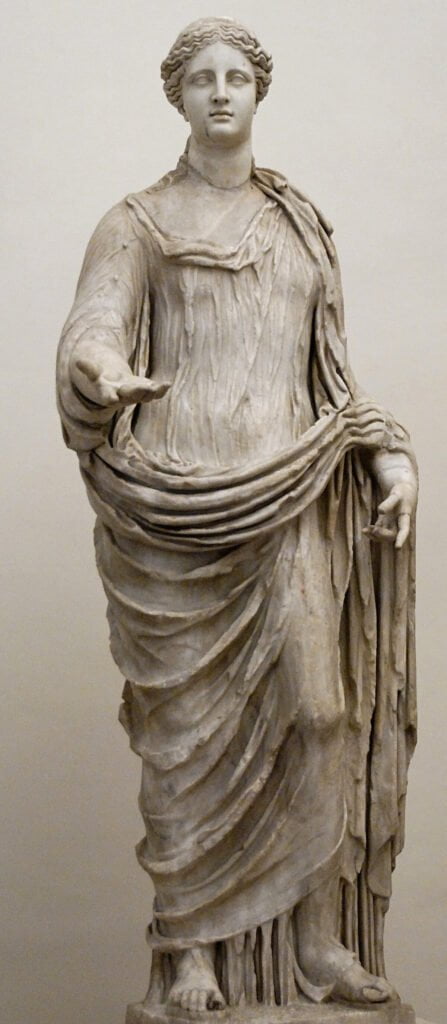
Agriculture was the cornerstone of ancient Greek society. It was more than just a means of sustenance; it was a reflection of the cyclical nature of life, a dance of seasons, and an intimate bond between the land and its people. In this dance, Demeter was the lead. As the goddess of harvest and fertility, she epitomized the very essence of agriculture. To the Greek populace, her favor meant bountiful harvests, and her displeasure could result in famine. She was not a distant deity but a daily presence, interwoven into the fabric of their agrarian lives.
Our understanding of Demeter’s importance is further enriched by references from primary texts. One such invaluable source is the “Homeric Hymns,” a collection of ancient Greek songs dedicated to the gods. In these hymns, Demeter is frequently invoked, not just as a deity of harvest but as a symbol of the life-death-rebirth cycle. Her tales in these hymns provide not only a window into her divine attributes but also into the profound respect and love the ancient Greeks held for her.
3: The Myth of Demeter and Persephone
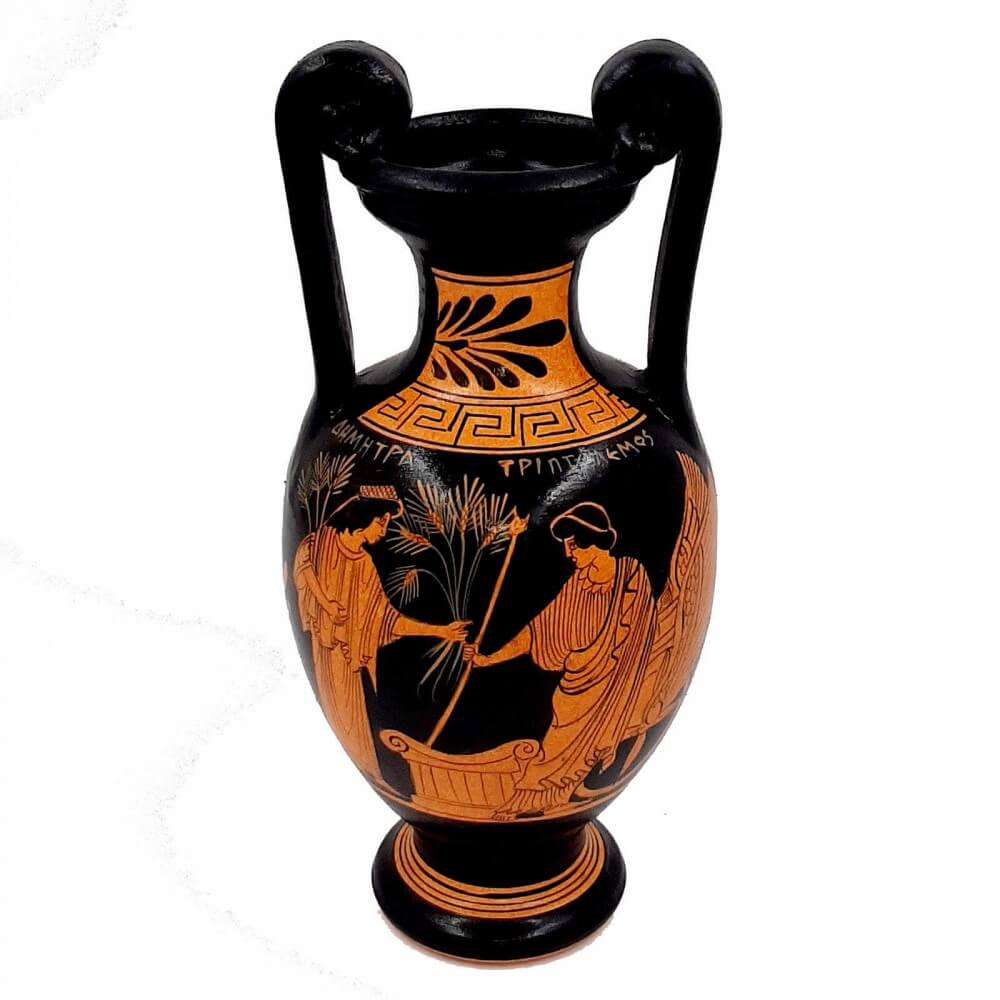
The realm of Greek mythology is replete with tales of love, passion, betrayal, and the enduring human spirit. Yet, among these tales, the story of Demeter and her beloved daughter Persephone shines distinctly, touching the deepest chords of human emotion.
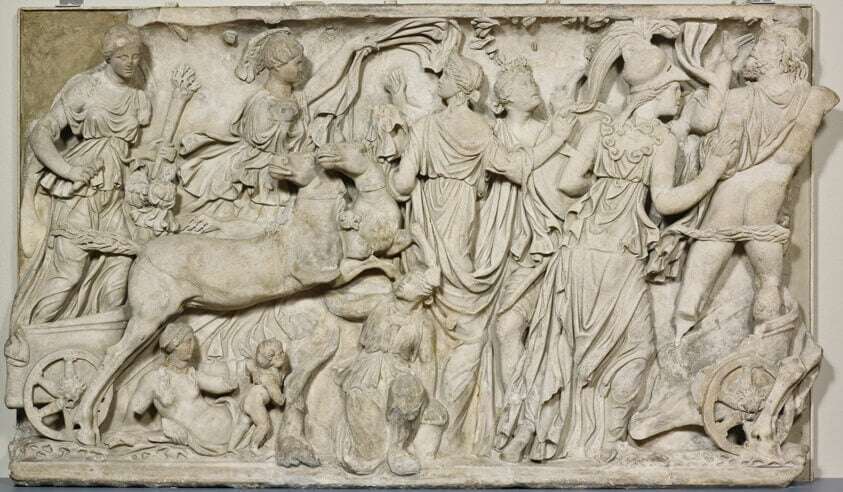
In a sunlit meadow, Persephone, Demeter’s daughter, was gathering flowers when Hades, smitten by her beauty, abducted her to his underworld realm. Heartbroken, Demeter’s grief plunged the world into a frigid winter, halting all growth. Zeus intervened, brokering a deal: Persephone would split her time between the underworld and her mother. This agreement birthed the seasons, with spring symbolizing their joyful reunion and fall her return to Hades.
This myth is a profound reflection of the immutable cycle of life, death, and rebirth, mirroring nature’s rhythms. The barrenness of winter and the bloom of spring are not merely seasonal changes but represent the deep emotions of a mother and her child, the pain of separation, and the joy of reunion.
Looking beyond Greek shores, the theme of mother-daughter relationships and separation is not unique. For instance, in Hindu mythology, there’s the tale of goddess Parvati and her son Ganesha. While the dynamics differ, the underlying emotions of love, protection, and the pain of separation resonate similarly. In Native American folklore, tales of the earth as the nurturing mother and the beings as her children evoke comparable sentiments. These cross-cultural parallels underscore the universality of maternal love and the inevitable rites of passage that every child undergoes, further enriching our understanding of the Demeter-Persephone narrative.
4: Powers, Symbols, and Worship
Greek mythology paints vivid images of its deities, each with unique attributes that represent their dominion in the cosmos. Demeter, the goddess of harvest and fertility, stands tall with her powers and symbols, deeply rooted in the agrarian lifestyle of ancient Greece, guiding its people through the seasons of sowing and reaping.
Demeter’s Powers and Their Implications:
- Fertility and Agriculture: As the goddess of fertility, Demeter held the power to bless the earth with bountiful harvests. Her favor meant prosperity and sustenance, whereas her displeasure could lead to barren lands and famine.
- Life Cycle Control: Beyond just crops, Demeter could influence the very cycle of life and death, symbolized most notably in the tale of her daughter, Persephone. Their story is a testament to her control over nature’s rhythms, from birth to decay.
- Sacred Laws: Demeter was also believed to govern the sacred laws of the life cycle. Her principles guided human understanding of existence, ensuring balance and respect for the natural order.
Symbols Associated with Demeter:
- Cornucopia: Often known as the ‘horn of plenty’, the Cornucopia symbolizes abundance and nourishment, a direct representation of Demeter’s blessings on agriculture.
- Wheat: Emblematic of fertility and the harvest, wheat stands as a testament to Demeter’s dominion over the earth’s yield.
- Torch: Representing her relentless search for Persephone, the torch is a symbol of hope, determination, and the illuminating light of a mother’s love.
- Poppy: Growing among the barley in the fertile fields, the poppy signifies Demeter’s connection to the earth and its bounteous produce.
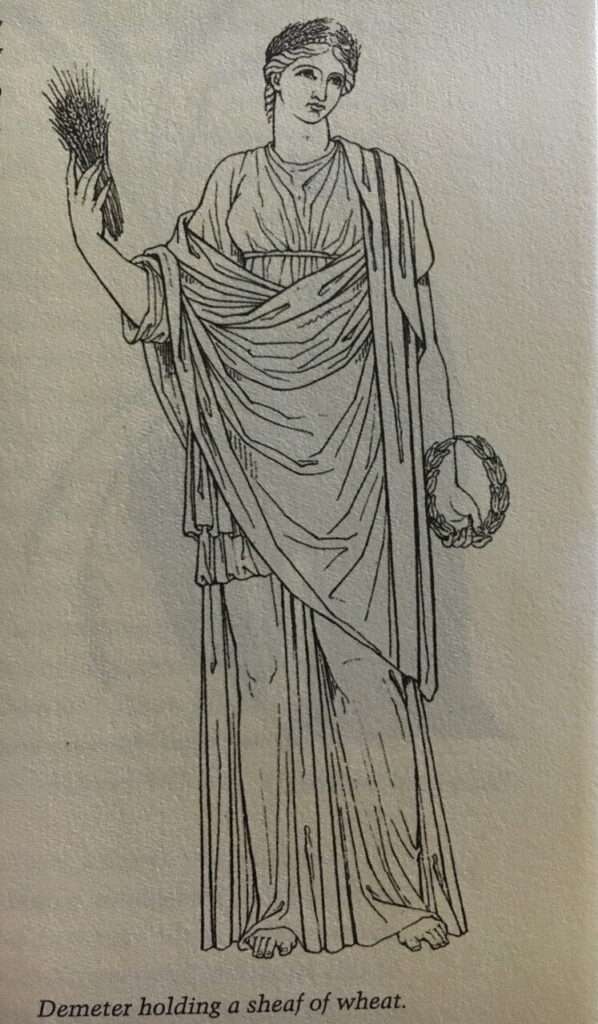
Eleusinian Mysteries:
The Eleusinian Mysteries are among the most revered and secretive rites of ancient Greece. Held in the town of Eleusis, these rituals celebrated the teachings and myths surrounding Demeter and Persephone. Initiates underwent a profound spiritual journey, experiencing symbolic death and rebirth, closely mirroring the tale of Persephone’s descent into the underworld and her eventual return. While the exact proceedings remain shrouded in mystery, it is widely believed that participants gained a deeper understanding of life, death, and the promise of rebirth, affirming the eternal cycle championed by Demeter. These mysteries not only reinforced her significance but also allowed ancient Greeks to feel an intimate, transformative connection with their revered goddess.
Demeter’s Role in Modern Culture and Reflections
Centuries may have passed since ancient Greeks invoked the name of Demeter in their daily rituals, but her legacy continues to thrive in the corridors of modern culture. She stands as a testament to the ageless human connection to nature, and her narratives find resonance even in contemporary discussions about sustainability and the environment.
Modern Reinterpretations and References:
- Literature: Contemporary authors, inspired by the rich tapestry of Greek mythology, have reincarnated Demeter in modern tales. Whether as an allegory for motherly love or as a symbol of the eternal cycles of nature, she continues to be a muse for writers worldwide.
- Movies: The world of cinema has seen Demeter’s story retold with modern sensibilities. From intimate dramas to grand epics, the poignant tale of a mother’s quest to reunite with her daughter finds new expressions and interpretations.
- Art: Modern artists, using varied mediums, capture Demeter’s essence, from sculptures that mirror ancient depictions to abstract representations focusing on her elemental powers and connection to the earth.
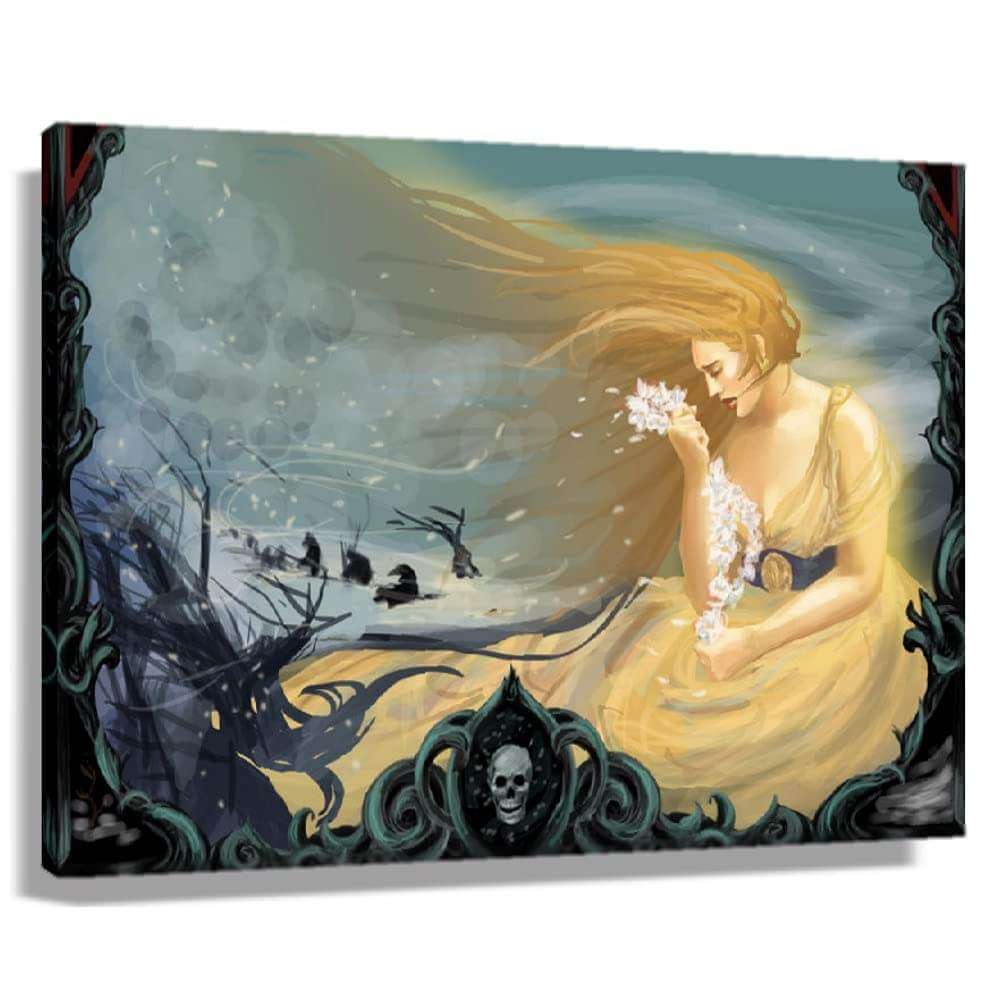
Firsthand Report: Modern-day Eleusis:
A journey to modern-day Eleusis is akin to traveling back in time. The archaeological sites, though silent, speak volumes about the profound impact Demeter and her mysteries had on ancient Greeks. Vestiges of temples and ritual sites provide a tactile connection to the past, allowing one to envision the grand ceremonies and feel the fervor with which these rites were once conducted. Beyond mere bricks and mortar, Eleusis embodies the undying spirit of Demeter and the ancient respect for nature’s cycles.
Original Analysis: The Parallel Paths of Ancient Reverence and Modern Sustainability:
In a world grappling with climate change and environmental degradation, the reverence ancient Greeks held for Demeter finds renewed significance. Her tales, rooted in the appreciation of nature’s rhythms and the importance of balance, are startlingly relevant. Modern sustainability movements, advocating for harmony with nature and emphasizing the importance of cycles — be it water, carbon, or food — mirror Demeter’s teachings. Just as Demeter’s wrath led to barren lands, today’s ecological missteps result in stark reminders of nature’s fragility. On the flip side, sustainable practices, much like Demeter’s blessings, promise abundant harvests and prosperity. The parallels between ancient worship and contemporary environmentalism underscore a timeless truth: our well-being is inextricably linked to the earth’s well-being.
6: Conclusion
As the curtains draw on our exploration of Demeter, we are left with a profound appreciation of her timeless presence. From the ancient fields of Greece, where farmers looked to her for bountiful harvests, to contemporary art studios, where she inspires new creations, Demeter’s legacy endures. She is not just a deity of fertility and harvest; she symbolizes the intricate dance of life itself — of births and rebirths, of joys and separations, and of the eternal bond of motherhood.
Her tales, as ancient as they are, reverberate with contemporary themes. Modern conversations about sustainability, environmental harmony, and the cyclical nature of existence find echoes in the myths of Demeter. Moreover, her poignant story with Persephone is a universal tale of love, reflecting the ageless relationship between a mother and her child.
To all who have journeyed through this narrative, here lies a call to action: Do not let this be the endpoint of your exploration. Dive deeper into the vast oceans of Greek mythology. In its stories, characters, and myths, you’ll discover reflections of humanity, insights into the past, and perhaps, inspirations for the future. For, in these ancient tales, lie the seeds of understanding that can help us navigate our modern world with wisdom and grace.
